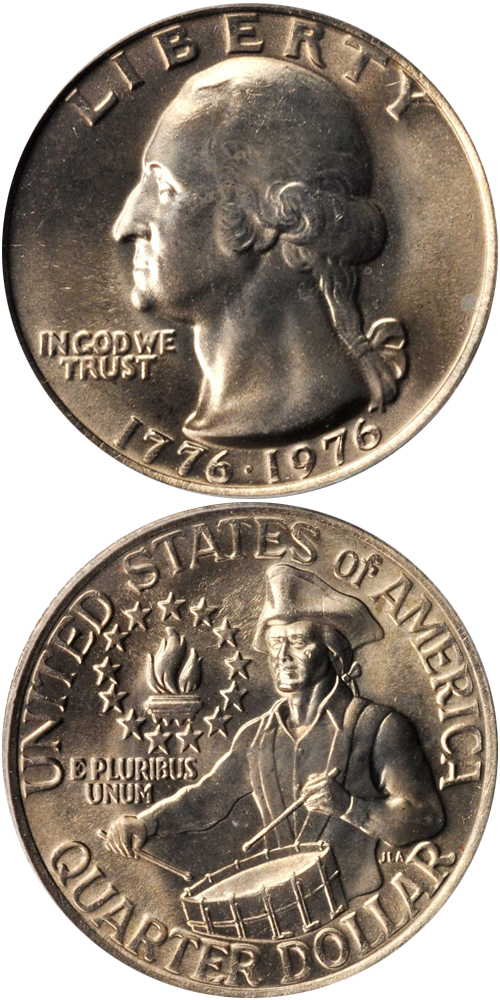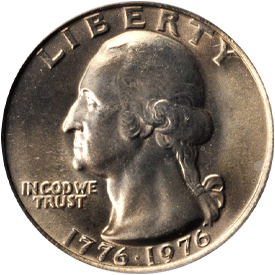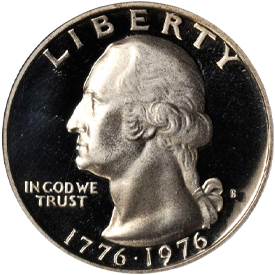Designed by: John Flanagan (obverse); Jack L. Ahr (reverse)
Issue Date: 1976
Composition:
Pure copper core to which a copper nickel (75% copper, 25% nickel) is bonded (clad)
Layers of 80% silver and 20% copper bonded to core of 20.9% silver, 79.1% copper (silver clad)
Diameter: 24.3 mm
Weight: 5.67 grams (87.50 grains, clad), 5.75 grams (88.73 grains, silver clad)
Edge: Reeded
Business Strike Mintage: 1,669,902,855 (clad), 11,000,000 (silver clad)
Proof Mintage: 7,059,099 (clad), 4,000,000 (silver clad)
To observe the nation's bicentennial the Treasury Department called for a competition to redesign the reverses of the quarter, half dollar, and dollar. The motif submitted by Jack L. Ahr was the winner for the quarter. At the center of the coin a drummer in colonial garb is shown, with a torch encircled by stars to the upper left, with E PLURIBUS UNUM below it. The inscription UNITED STATES OF AMERICA, QUARTER DOLLAR surrounds. The obverse of the coin is a continuation of the design by John Flanagan inaugurated in 1932, except that the bicentennial piece has the unique concept (in American coinage for circulation) of a double date: 1776-1976.
Examples were produced in large quantities for circulation at the Philadelphia and Denver mints. At the San Francisco Mint Proofs were made for collectors. Interestingly, production was well underway in 1975, the year before the bicentennial, thus creating prestrikes.
Uncirculated and Proof pieces are readily available.
The San Francisco Mint produced an additional coinage of bicentennial coins with high silver content. The "clad" format was used, with the outer layers consisting of 0.8 part silver and 0.2 part copper bonded to a core of 0.209 part silver and 0.791 part copper. 11,000,000 were struck with a business or "Uncirculated" finish, while 4,000,000 Proofs were made. Unsold examples of both finishes remained in the Mint inventory for a number of years after they were produced.
Uncirculated and Proof specimens are readily available.








